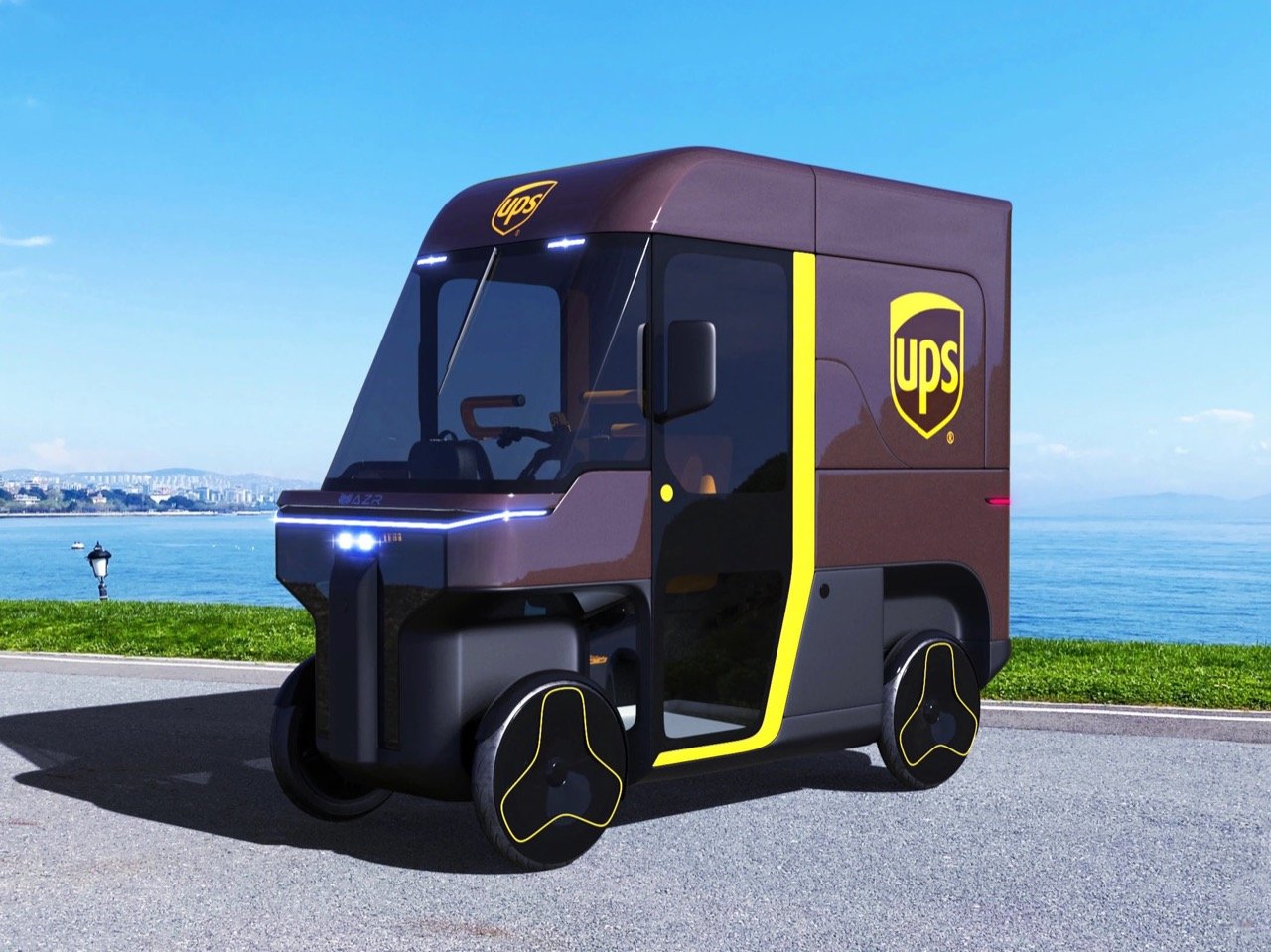I love concepts that have substance over aesthetics. Don’t get me wrong, aesthetics are crucially important, but a concept’s most powerful feature should be exactly that – the CONCEPT! The AZR Quad Go, a modular quadricycle from AZR Engineering and designed by Emre Husmen, is one of those. We’ve seen a flood of last-mile mobility solutions, from glorified golf carts to e-bikes with delusions of grandeur, but most of them feel like compromises. They’re either too exposed for a rainy Tuesday in Brussels or too single-purpose to justify their footprint in a crowded city. The Quad Go feels different. It feels like a complete thought.
And that’s the whole magic trick here: it’s not a single vehicle. It’s a platform. The images show a taxi, a UPS delivery van, a semi-open pickup, and a completely stripped-down buggy, all built on the exact same electric chassis. This is true platform thinking, the kind of systemic design that companies talk about but rarely achieve with such elegance. For an urban user, this means your vehicle can be what you need it to be. A small business owner could use the pickup configuration for hauling supplies from a flower market during the week and then switch to a closed passenger pod for a family outing on the weekend. The sheer practicality of that idea is profound, moving beyond the static nature of traditional vehicle ownership. It’s an approach that values resourcefulness and adaptability, core tenets of modern urban life.
Designer: Emre Husmen
Emre Husmen’s design language is a key part of why this works so well. The aesthetic is clean, almost like a piece of consumer electronics. It’s friendly and unintimidating. The forms are simple and geometric, with a continuous LED light signature that gives it a distinct, modern identity without being aggressive. The clever use of bold color accents, like the yellow frame on the taxi or the blue on the open buggy, helps define each variant’s personality and function. It’s a smart visual system that makes the modularity intuitive. This isn’t the kind of vehicle that screams about performance or status; it speaks a language of utility, intelligence, and quiet confidence. It’s designed to integrate into the fabric of a city, not dominate it.
You have to picture this thing in its natural habitat. Think of the narrow, historic streets of Lisbon or the dense, complex layouts of Amsterdam. A standard car is a liability there, but a bicycle isn’t always practical for carrying groceries or staying dry. The Quad Go slots perfectly into that gap. With its enclosed cabin, it offers real weather protection, a critical feature that makes it a year-round solution. The fact that it requires no license or plates in many jurisdictions removes a massive barrier to entry, putting it in the same accessibility class as an e-bike, but with four-wheeled stability and security. It shares some spiritual DNA with vehicles like the Citroën Ami, but its modular cargo and passenger capabilities give it a far wider scope of use.
Think about what this means for a fleet operator. A company like UPS could have a fleet of identical chassis, with a pool of swappable bodies for different routes or seasonal demands. The efficiency in maintenance, parts, and training would be immense. Instead of managing a diverse fleet of vans and smaller vehicles, they could standardize around a single, flexible platform. The render showing the Quad Go in the iconic brown UPS livery isn’t just a clever mock-up; it’s a powerful illustration of the commercial potential. It’s a serious tool for last-mile logistics, one that happens to be electric, quiet, and perfectly sized for the urban core.
So, is the Quad Go the final answer to the urban mobility puzzle? Concepts are one thing, and production is another beast entirely. There are challenges ahead in manufacturing, battery technology, and meeting diverse regulations. But as a statement of intent, as a piece of design thinking, it is remarkably compelling. It presents a future where our vehicles are not just single-use appliances but adaptable partners in our daily lives. It’s a humane, intelligent, and deeply practical vision for how we get around, and I, for one, will be watching very closely to see it roll onto the streets. It feels like it belongs there already.
The post The Citroën Ami Has a New Rival, and It’s Way More Versatile first appeared on Yanko Design.

